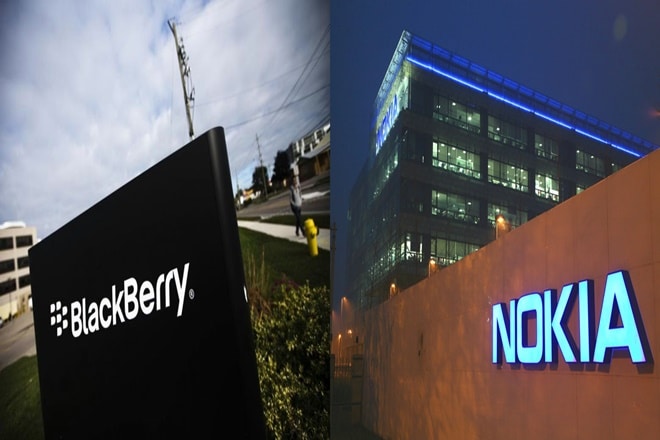In today’s competitive business setting, benefits administration encompasses the entire process of employee benefit planning. Starting from design, pricing, and compliance to communication, implementation, and everyday management. Hence, it’s important to implement strong employee benefits administration software to effectively manage your employees’ benefits plans. This is because effective benefits administration helps to create a competitive advantage in attracting, hiring, and retaining top talent and cutting operational costs. Stay glued to learn more about what outsourcing employee benefits administration is.
What is Employee Benefits Administration
At its most basic, employee benefits administration is the efficient management of monetary and non-monetary employee benefits. Which is classified as a traditional HR function. However, benefits administration in this context involves employee onboarding and offboarding, benefits communication and training, tracking employees’ use of benefits, and directing the annual open enrollment process. Hence, employers often use software or the services of a third-party benefits broker to perform these core functions on the company’s behalf.
What are the 5 Types of Employee Benefits?
Common employee benefits programs usually consist of the following,
- Health insurance
- Vacation time
- Paid time off
- 401(k)s and other retirement plans
- Parental leave
- Paid time off
What do Employee Benefits Administrators Do?
Employee benefits administrators are human resources employees in charge of updating staff members on their benefits packages. They usually design the company’s benefits programs while working with insurance and retirement plan providers to find plans suitable within the company’s budget and provide value to employees.
Benefits Administration Process
The administration of employee benefits is an all-encompassing process that must be dynamic, multigenerational, streamlined, and affordable. This is why organizations usually start by determining the kinds of benefits the company should provide and creating a benefits package.
Offering strong benefits to your employees shows them they’re valued and appreciated for the work they contribute to your company. Working in an environment with a competitive benefits plan often leads to long-term employees and a low turnover rate. This is because a good employee benefits administration process helps the staff better understand the benefits offered to them as they enroll in the programs well-suited to their needs.
Benefits Administration Process: Step-by-Step Guide
Carefully consider your options and budget when creating a competitive benefits package for your employees. Steps to building an effective benefits administration process include:
#1. Make Research About other Companies’ Benefits
Before compiling a strong benefits package for your team, conduct research on the type of benefits your employees would prefer and what other companies are offering. Build surveys for current employees asking what they want and need in a strong benefits package.
#2. Establish Your Benefit Budget
Meet with your financial or tax advisor to determine a strong budget for your benefits package, if possible. Start with the basic benefits to offer employees like health insurance, and from there, add in as many additional perks and benefits as your budget allows. Return to your budget at least every quarter as your company grows to see how much you should add or subtract and still maintain a competitive package.
#3. Manage Your Benefits Program Effectively
Before administering your benefits plan, set an efficient process in place. Determine how tasks like onboarding employees, giving benefits training and tracking benefit usage will be completed to help you better manage the benefits administration process. Use tools like HR software to track benefits and employee information. Also, construct a detailed onboarding and enrollment process each employee must follow when they start at the company.
#4. Record Your Results
A major component of the administration process is reviewing your benefits regularly. It’s important to know how your employees use the benefits and if they’re satisfied. But, if a benefit doesn’t get much use, you may consider dropping it the following year. You can also send surveys to measure employee engagement and gather feedback to tailor your benefits package better to meet your staff’s needs.
#5. Measure Results and Update Your Benefits Package
Review your benefits package regularly to ensure it fits well within your budget and that it follows EBSA guidelines. Measure the results of your benefits package by sending out surveys to employees each year asking what they like about the plan you offer and which benefits they’d like you to add. You can also get this information from exit interviews and job acceptance rates.
Employee Benefits Administration Software
Benefits administration software is a solution that HR and employees use to manage and navigate workplace benefits. These systems bypass paperwork and automate the eligibility, election, and enrollment in traditional benefits and other options, optimize employee benefits packages, identify cost-saving opportunities, and ensure regulatory compliance. Benefits administration software work by providing a portal that centralizes benefits access.
In addition, these digital one-stop shops streamline many of the major pain points of the administration process by putting everything in one place. This lets individuals log on to access details about the benefits that are available, cost alternatives, and other plan specifics. These systems also allow comparison between options along with other decision support tools that can recommend a customized plan for an employee’s particular situation.
Employee Benefits Administration Software: Examples
There are lots of HR software in the market today and it can be hard to choose any one software solution. Hence, we’ve compiled a list of the top employee benefits administration software for you. Each management solution has its unique selling point, you have to figure out which software works best for your company, processes, and employees.
#1. Deel
Deel is a global compliance and workforce management software that lets you manage all employees and contractors in one platform and offer localized benefits wherever they live. Deel’s in-house expertise in over 150 countries allows you to confidently provide a comprehensive range of benefits and perks to your team. You can compare different country costs and see what benefits and withholdings are required.
#2. Paychex Flex
This is a cloud-based employee administration software that provides businesses with an integrated platform to manage payroll, benefits, HR, and timekeeping. Companies can streamline their internal processes and provide employees with an easy-to-use interface for managing their information. The software includes capabilities for calculating payroll taxes, preparing tax filings, processing payments to vendors and suppliers, managing benefits programs, and tracking employee time worked.
#3. GUSTO
Designed for modern employers, GUSTO is a cloud-based software that’s easy to navigate and includes fantastic support. One feature conscientious employees will appreciate is the fact that they can donate a portion of their paycheck to charity, which is an effective way to improve employee engagement and satisfaction.
#4. Plexis Payer Platforms
PLEXIS Payer Platforms is a U.S.-based company that was founded in 1996. This benefits software helps self-insured employer groups around the world manage claims and carry out benefits administration. PLEXIS is best for benefits administration companies dealing with health plans, international insurers, TPAs, and government payers.
#5. BambooHR
BambooHR is a useful software program with high user ratings. Featuring applicant tracking, onboarding tools, e-signature, and time-off tracking, this is a great program that provides all of the tools you need in one place. You can download the mobile app for additional convenience, which makes it even easier to keep up with reporting. BambooHR software can make your administration system more efficient and remove the data management clutter that can bog down your team.
#6. Trinet
Trinet offers a cloud-based HR management platform that’s well-suited to small and medium-sized businesses that want access to additional HR services too. Their software works in tandem with advice from their in-house experts who will help you craft a top-tier benefits program for your employees.
Outsourcing Employee Benefits Administration
When a small business starts scaling, the HR function becomes increasingly challenging to manage. From meeting customers’ demands and applying best practices to hiring and remaining compliant with complex regulations, the HR work is non-stop. Employee benefits outsourcing refers to partnering with external HR consultants to ease the tasks involved, including enrollment services, payroll integration, and employee assistance.
The outsourced HR consultants focus on managing the daily tasks involved to ensure a quality experience. Thus, outsourcing employee benefits administration allows you to keep your workers as employees of your business but takes away most of the administrative burden of having to do the paperwork and jump through the legal hoops of administering the benefit plans.
Outsourcing Employee Benefits Administration: Factors to Consider
When looking for an outsourcing partner for your employee benefits management, there are a few key things to keep in mind.
- Experience and Expertise
- Customizable Solutions
- Technology and Infrastructure
- Financial Stability
- Customer Service
Advantages of Outsourcing Employee Benefits Administration
There are many reasons why a business may choose to outsource a particular task, job, or process. For example, some of the recognized benefits of outsourcing include:
#1. Flexible, Quality Staffing
Making do with “average” staffing levels during peak volumes can lead to processing delays, errors, and other challenges. But with a wave of attrition and retirement sweeping the insurance industry, recruiting additional staff presents its own set of difficulties. Outsourcing enables brokers to leverage the support they need on demand, allowing them to ramp up or down throughout the year as needed.
#2. Professional Expertise
HR outsourcing organizations have experts dedicated to specialized topics, like compliance issues. Whether you have questions on federal regulations, evaluating talent, or planning benefits, you can reach out to an expert whose only job is to advise on these topics. This means you can get much more precise information than if you had one HR generalist trying to learn every subject on their own.
#3. Liability Protection
Outsourced HR consultants have the obligation of staying current with different regulation changes to ensure compliance and are aware of these changes impacts. Coupled with this, the burden of confidentiality automatically moves to the service provider when handling sensitive information involving health history and finance.
#4. Potential for Lower Costs
The rising costs of benefits are cause for worry in most companies. Organizations have a lot to gain from their service providers’ buying power due to economies of scale. With the fostered long-term relationships with different carriers, outsourced service providers can get a reasonable bargain for renewals and compare options.
#5. Employee Privacy
Talking about employee benefits in the workplace makes many people uncomfortable. On top of that, there are privacy concerns when it comes to discussing personal health benefits in the workplace. When you outsource your employee benefits administration, you remove the discomfort that an employee may feel when speaking to someone within his or her organization.
#6. Saves Time
Employee benefits providers streamline the enrollment process with web-based tools and simplify administration as the point of contact for all employee inquiries. During open enrollment, they analyze the most cost-effective options for sign-up or renewal. Enrollment, updates, or changes can happen quickly using customized technology platforms.
#7. Easy integration with other services
When you use your payroll company for benefits administration you can ensure that all of your services will be integrated. You can increase efficiency in the workplace when you integrate all of your services with one provider. Integrating payroll management, HR services, and benefits administration means that each program will be able to speak to each other, providing a more streamlined human resources experience.
What are Employee Benefits in the USA?
Employee benefits are any kind of tangible or intangible compensation given to employees apart from base wages or base salaries.
What are the Types of Payroll Benefits?
These benefits typically include medical insurance, dental and vision coverage, life insurance and retirement planning,
Conclusion
If you’re offering comprehensive benefits, determining how your HR team will manage them should be a priority. You’re more likely to make mistakes with manual administration, so consider investing in benefits administration technology. While it may seem like a hassle, a streamlined administration process will help your employees better understand and use their benefits.
References
- How to Implement an Employee Referral Bonus (Guide)
- BEST TIME CLOCK: Best Employee Time Clocks Software 2023
- TOP 45 EMPLOYEE PERKS AND BENEFITS: How To Use Them Effectively
- TOP EMPLOYEE SOFTWARE IN 2023: How To Choose One
- IT OUTSOURCING SERVICES: Meaning, Examples, Benefits & Company
- FOLLOW UP INTERVIEW EMAIL: Top Ideas, How to Write It & Best Tips
- EMPLOYEE ENGAGEMENT ACTIVITIES: Best engagement activities for work in 2023
- ATTENDANCE POLICY: Definition & Steps to an Effective Attendance Policy
- AWARDS FOR EMPLOYEES: Best Fun Tips, Service & Recognition Ideas






